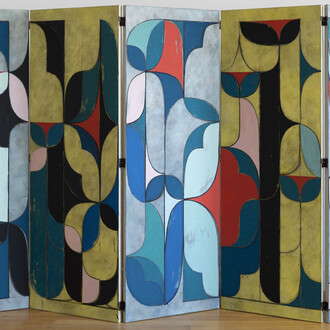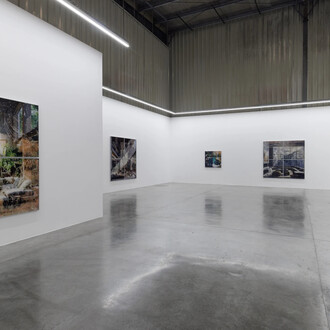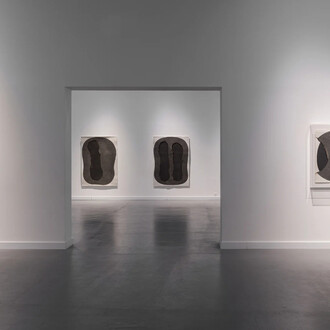Kim Il Tae is a contemporary artist from South Korea, renowned for using the purest gold as the main element in his artworks. Light of Gold Exhibition by Artist Kin il Tae and Organized by Philip Shin. As the curator and organizer of numerous successful art exhibitions, Philip Shin has been a driving force in showcasing the works of talented artists from around the world. Philip Shin, a prominent figure in the industry, has successfully secured mandates from the top 10 Korean artists. This strategic move not only solidifies Shin's position in the art market but also reflects a momentous collaboration between an influential art professional and the cream of Korean artistic talent.
Philip Shin kicks off his series of exhibitions with the much-anticipated debut of artist Kim Il Tae. Recognized for his innovative approach to traditional mediums, Kim Il Tae's works promise to captivate audiences with a harmonious blend of modern aesthetics and cultural richness. This inaugural exhibition serves as a celebration of artistic evolution and the unveiling of a promising talent.
Building on the success of the first exhibition, Philip Shin brings together a curated selection of works by five top-tier Korean artists. This exhibition aims to showcase the diversity and depth of contemporary Korean artistry. From abstract expressions to meticulous realism, the audience is in for a visual feast that highlights the unique voices within Korea's vibrant art scene.
Philip Shin's commitment to cultural exploration takes center stage in the third exhibition, where the spotlight turns to the rich heritage of Chinese and Korean antiques. This immersive journey through time invites visitors to appreciate the craftsmanship, symbolism, and historical significance embedded in each artifact. It's a testament to the curator's dedication to bridging cultural narratives through the language of art.
As a visionary in the art world, Philip Shin goes beyond traditional exhibitions to host a Forum of Artwork Appraisal. This educational and interactive event brings together experts, collectors, and enthusiasts to delve into the intricacies of assessing artistic value. From understanding market trends to decoding the nuances of craftsmanship, the forum aims to empower participants with insights into the art appraisal process.
Philip Shin's upcoming exhibitions promise not only a visual feast for art enthusiasts but also a thought-provoking exploration of cultural narratives and the multifaceted world of art. Each exhibition serves as a testament to his commitment to fostering artistic dialogue and appreciation on both local and global scales. As we anticipate these future showcases, everyone eagerly awaits the enriching experiences they will undoubtedly bring to the world of art.
Kim creates his work in 24 karat gold – considered the purest form of the yellow metal - with 999 parts per thousand of gold. No other medium will do for him, as he intends to make an “indelible” mark and leave the world with works of art that last forever – the kind that will not fade or crack or crumble with time or, in his own words, “something that will last for 1,000 years”.
Oil painting will lose its original colour and also cracks over time. However, Kim’s pure gold art has no issue with this problem. His works will spread and share the feeling of wealth and abundance, benevolence and happiness to the world. Their spirit will be passed on from generation to generation, remaining unchanged. Gold has held a very special place in the human imagination for millennia. Being compared to the mighty sun, the Incas called it the ‘tears of the sun’. Its yellow hue is the Royal colour in Brunei, Malaysia and Thailand. This sun-coloured metal is seen as being synonymous with power and beauty and has found all-round cultural acceptability. Distinct among metals for being imperishable, never tarnishing in air or in water, gold is dense, soft and ductile with an attractive yellow colour and lustre.
Gold leaf was used in the creation of illuminated manuscripts in Constantinople, Ireland and Italy from the 5th century. The most notable of modern artists who used it in his works is Austrian artist Gustav Klimt (1862-1918). During his ‘golden phase’, Klimt created a series of gold leaf paintings which include his world-famous masterpieces ‘The Kiss’, and the ‘Portrait of Adele Bloch-Bauer I’ - which was renamed ‘The Lady in Gold’.
Kim – whose name has an unreal similarity with that of Klimt - driven by his passion for art and spurred on too by the women in his life, has taken gold art to a different dimension. Unlike those who have produced gilded paintings, Kim’s work is made with non-negotiable, 24 karat gold.
He has dedicated over a decade of his life to masterfully manipulating the medium — melding pure gold with natural oils — and perfecting his technique. The result is a gold paint that presses well onto the canvas without cracking or fading, and creating gilded masterpieces that are truly one of a kind. He first toyed with the idea of golden art out of desperation. He had made it to America as an artist, but was struggling to make a name for himself. His art teacher mother, who had spent 36 years encouraging students to risk the path less travelled, suggested painting in gold.
Not gold leaf or gold foil, but in the actual malleable, ductile, material itself. It was completely unheard of then – and perhaps now. Kim, the gold-artist-aspirant, became an amateur alchemist, taking seven years to perfect a secret mixture of 24 karat gold powder, natural oil and a glue of his own making. He had lived out his mother’s suggestion. He then spent several more years practicing with the finest red clay from the southwest province of South Jeolla, in his home country.
It was a devoted struggle, but blood, sweat and tears weren’t the only toll that his art has taken on him. Market trends too hang on him like a Damocles sword. As the global market turns its attention towards non fungible tokens (NFT) catching the attention of enthusiasts everywhere, including the UAE, it begs the question whether non-digital art still has the same attraction it had. Kim has been a hit in Malaysia and among collectors there. He showcased his exclusive collection of gold paintings valued up to US$2 million (RM8.8 million) and rising, in that country.
Among the show-stopping paintings were ‘Rose Garden 1’, where a symphony of blooming flowers are able to brighten up the dullest of days. It is of course a rose garden like no other, because of its presentation in 24K gold. It is a wondrous harmony of art and nature. Another memorable piece was ‘Eight Golden Dragons I’. The dragon is a mythical creature signifying tremendous power and a commanding character. It is no surprise that when an icon such as the dragon is presented with a golden sheen, the idea of burgeoning prosperity comes to mind. It makes the artwork more desirable.
But actual gold bars or coins – which could be sneeringly seen as alternatives – cut no ice with Kim. When people ask him about the weight of gold used in each painting, perhaps with a view to assess the “value” of the artwork, Kim would say that if it was gold that they were looking for, they should really get a gold bar or coin instead.
He is right to feel offended: though anything involving gold is a grand and rich affair, the artist assertively wants people to consider the novelty and the great skill behind each work of his. Kim’s uncommon paintings are an impressive sight to behold. They impart a gleaming three-dimensional quality and everlasting radiance in both studio and exhibition settings. Therefore to say that they should not be appraised on just the value of the gold, is only stating the obvious. Gold and art are two precious and valuable things to hold and behold, each with its own individual merit. And when they come together as in Kim's artworks, it is a double delight.
Kim first disrupted the Korean art scene in 2011. At his inaugural private exhibition in Insa-dong, an arts and culture district in Seoul, a metal detector was employed to verify the purity of the gold used. The investigator, so to say, ultimately realised it was art, and allowed the show to proceed. It was creative disruption at its best! Since that initial alarm, Kim’s extraordinary paintings have caught the imagination of the Korean public, no less than that of the global audience, and have gathered an ever-widening circle of admirers. His reputation has also earned him critical acclaim globally. He has the distinction of being the only artist in the world who paints and sculpts in pure gold on canvas.
To date, he has held over 20 exhibitions in regions spanning Tokyo, Hong Kong, Guangzhou, Jakarta, Kuala Lumpur, Yangon and Los Angeles. More are planned in the near future at other venues. The highlight of his career includes a two-week solo exhibition in 2016 at London’s Saatchi, a gallery renowned for exhibiting only the finest works in contemporary art.
It was always in Kim’s mind to work hard to distinguish himself from Western artists (Klimt again comes to mind). Call it luck by chance or call it the sweet fruits of intense labour, but Kim has found that gold is a suitable medium to portray Eastern philosophy.
He is inspired by simplicity - roses symbolise his hope to share the warmest, most honourable and most honest moments with others - and through his art, he longs to communicate this message. He is confident – and so are we – that the idea will not change in a thousand years. Kim’s works are found in closely-held private collections and in institutional holdings internationally.













